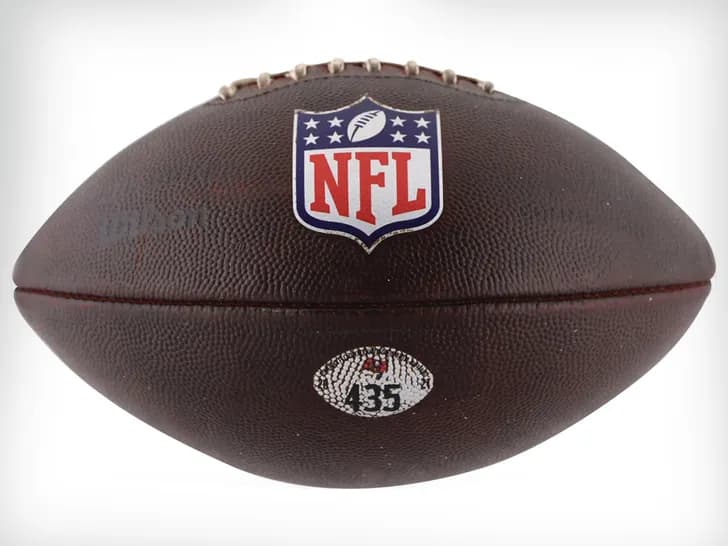I’ve been reading social media posts in which a commentator dabbles in uninformed legal theories and suggests that – in the relationship between an auctioneer (and a seller) on one side of a transaction and a bidder/buyer on the other – “commercial reasonableness” requires the opportunity for a pre-auction inspection in order for property to be sold “AS IS.” Apparently, as the argument goes, if – due to COVID-19 social distancing restrictions or, otherwise – a bidder/buyer is unable to perform a pre-auction inspection, but, nevertheless, makes the conscious, knowing, and willing decision to purchase “AS IS” without the availability of a pre-auction inspection, the buyer can be relieved from any personal responsibility for his or her conscious, knowing, and willing decision by claiming that he or she was compelled to voluntarily enter into a consensual transaction the terms of which were, somehow, not commercially reasonable. The suggestion has even been made that a bidder who finds it inconvenient to take advantage of a pre-auction inspection (because of distance) should, likewise, be able, after the fact, to avoid the consequences of his or her conscious, knowing, and willing decision to purchase “AS IS” without a pre-auction inspection. If this construct seems convoluted, it’s only because the argument is hopelessly convoluted. As a practical matter, this is yet another variation on a theme in which the same commentator has been tilting at the same windmill with successive legal theories, each less compelling than the previous, while apparently subscribing to the Don Quixote philosophy that “I perceive everything I say as absolutely true, and deficient in nothing whatsoever, and I paint it all in my mind exactly as I want it to be.” In the real world, however, circumstances, context, and the law actually matter.
As an attorney, I advise auctioneer clients that, while a pre-sale inspection is not required for the “AS IS” disclaimer to be enforceable under Article 2 of the Uniform Commercial Code (which applies to the sale of goods), a pre-auction inspection often makes practical sense, and can help deflect dubious claims (including tort claims alleging fraud and misrepresentation) made by a disgruntled buyer attempting to avoid contractual obligations and personal responsibility. The issue that keeps coming up, however, in what has developed into a pseudo-intellectual whack-a-mole game is not whether a pre-auction inspection is advisable, when possible, but whether the law requires a pre-auction inspection to make the “AS IS” disclaimer enforceable. In this regard, understanding the actual legal parameters that impact on a business decision will help you to make an informed decision. However, when someone dresses up personal preferences as legal requirements to influence others, that’s just intellectually dishonest. In other words, fair and reasonable debate is appropriate and productive, but making stuff up is just making stuff up.
he most recent embodiment of the necessary inspection argument, involves borrowing (without attribution) the requirement for commercial reasonableness in the liquidation of collateral by a foreclosing secured creditor under Article 9 of the Uniform Commercial Code, and attempting to overlay that standard on the purchase and sale transaction under Article 2 of the Uniform Commercial Code. In fact, it’s been suggested that the determination of whether a sales transaction is commercially reasonable as between the auctioneer/seller on one side and the bidder/buyer on the other requires that method, manner, time, place, and other terms be measured. These are the parameters to be considered in determining whether the liquidation of collateral by a foreclosing creditor is commercially reasonable. It is important, however, to recognize that context and circumstances matter, and will, typically, speak to what is commercially reasonable in any given situation. What is commercially reasonable in one situation may not be relevant in another. So let’s look at UCC Articles 9 and 2.
UCC Article 2 governs the sale of goods and its provisions are principally directed toward the contractual relationship between the seller and the buyer, and, to the extent that the sale is through an auction, the auctioneer is implicated as well. By comparison, UCC Article 9 governs secured transactions, and applies to the relationship between a secured creditor and a debtor. These are distinct relationships and distinct transactions. Auctioneers should be aware of both Article 9 and Article 2, but need to be able to discern that there is a difference between those Articles, as well as the nature of the transactions covered by each.
Under Article 9, if a debtor defaults on payment obligations, a secured creditor who has a perfected lien on collateral may, typically, repossess that collateral. A foreclosing creditor may, then, keep the collateral in satisfaction of the debt, or may sell it. If a foreclosing creditor sells collateral and it is sold for more than what is owed, then, the surplus will, typically, be paid to junior creditors, and, ultimately, disbursed to or for the benefit of the defaulting debtor. If a foreclosing creditor sells collateral and it is sold for less than what is owed, then, the defaulting debtor will, typically, be responsible for any shortfall or deficiency. Article 9 imposes a duty on a foreclosing creditor liquidating collateral to conduct the sale in such a way as to avoid the creation, or exacerbation, of a deficiency. As such, if a foreclosing creditor makes a couple of phone calls and sells the collateral at a steep discount in a private sale – rather than through a well-advertised public auction – the defaulting debtor may have an argument that the sale was not conducted in a commercially reasonable manner, and, thus, may have a defense to a deficiency claim. That is a wholly different issue than whether someone suffering buyer’s remorse may, after voluntarily purchasing property in its “AS IS” condition – with or without a preview – claim that he or she was forced to enter into a consensual sales transaction that was not conducted in a commercially reasonable manner. And, here’s an important difference between a sales transaction under UCC Article 2 and the liquidation of collateral by a foreclosing creditor under UCC Article 9. The Article 2 transaction is voluntary and consensual, and no one is forcing a bidder/buyer to participate in an auction, regardless of what the bidder terms and conditions are. Liquidation of collateral under Article 9 is, very often, not voluntary or consensual as regards the defaulting debtor who, typically, has no control over the method, manner, time, place, and other terms of liquidation.
As near as I can tell, this latest iteration of the argument that the law requires a pre-auction inspection in order for the “AS IS” disclaimer to be effective results from typing the terms “UCC” and “commercially reasonable” into a search engine – which generates results that relate to UCC Article 9. However, you don’t need to be a lawyer to recognize that there is a difference between a secured transaction and a transaction for the sale of goods. And, you don’t need to be a math major to recognize that there is a difference between the Arabic numeral 9 and the Arabic numeral 2, or to acknowledge that the differently numbered Articles of the UCC address different subject matter. It takes a little independent thought, however, to correctly apply the concepts; and a little integrity not to misstate or misuse them. Bottom line is that (i) UCC Section 2-316 governs the use of the “AS IS” disclaimer in the transaction between auctioneer (and the seller) on one side and the bidder/buyer on the other; and (ii) UCC Section 9-610 and 9-627 govern the disposition of collateral by a foreclosing creditor with a perfected security interest in personal property. Confusing those concepts is sort of like comparing apples to bricks.
This article is for information and discussion purposes only, and is not intended as, and cannot be relied on as, legal advice. No attorney-client relationship is intended or established. Specific questions should be referred to an attorney of your own choosing







